Exercise 15 - Embeded Networking and Communications
Design and build a network connecting at least two processors comunicating using addressing
Hello Echo board (Exercise n.08)
Hello Echo board (Exercise n.08)
My first experience with serial comunication was during my Exercise n.08 when I uploaded on my Hello Board the code Hello.ftdi.44.echo.c. Check that section for more details.
Light sensing board (Exercise n.13)
See also Exercise n.13 for an other example of serial comunication I did during the Fab Academy.
Serial Bus Comunication
For this assigment I chose to work on serial comunication and in particular with the boards on the week's page.
The bridge board:
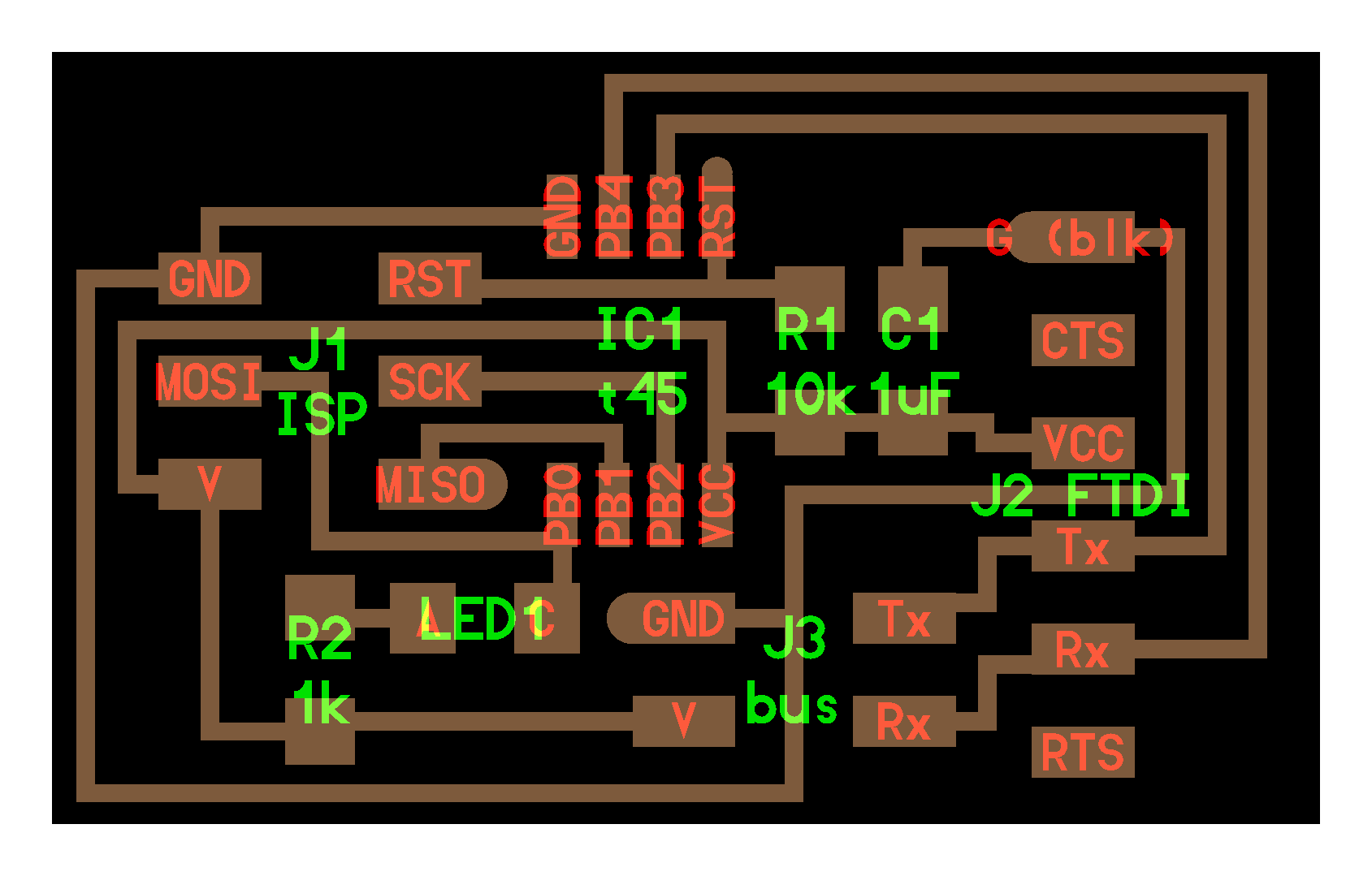
The node board:
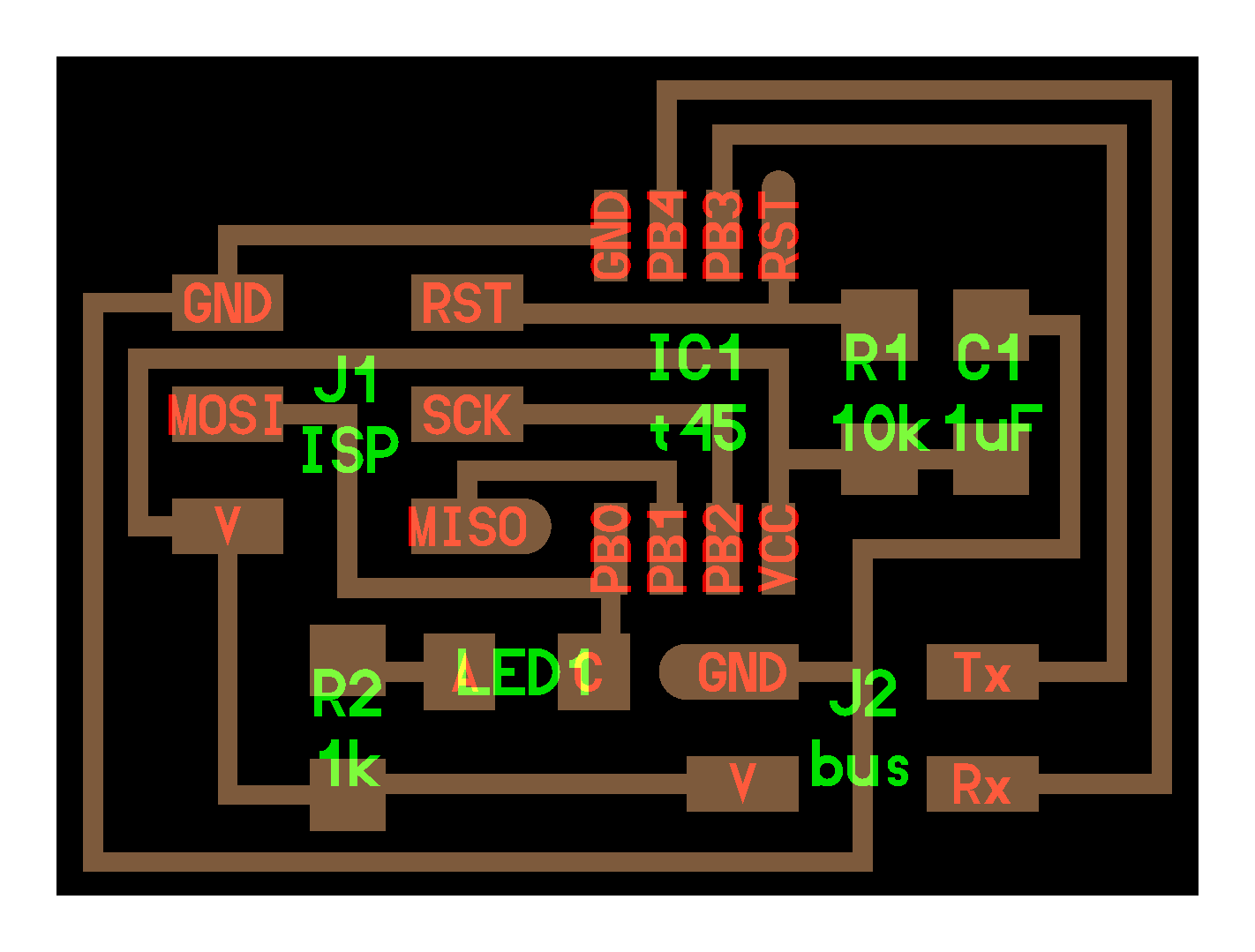
I downloaded the png files and through Fab Modules following the settings of exercise 04 I created the .rml files.
In particular here the settings fot the traces of the bridge board:
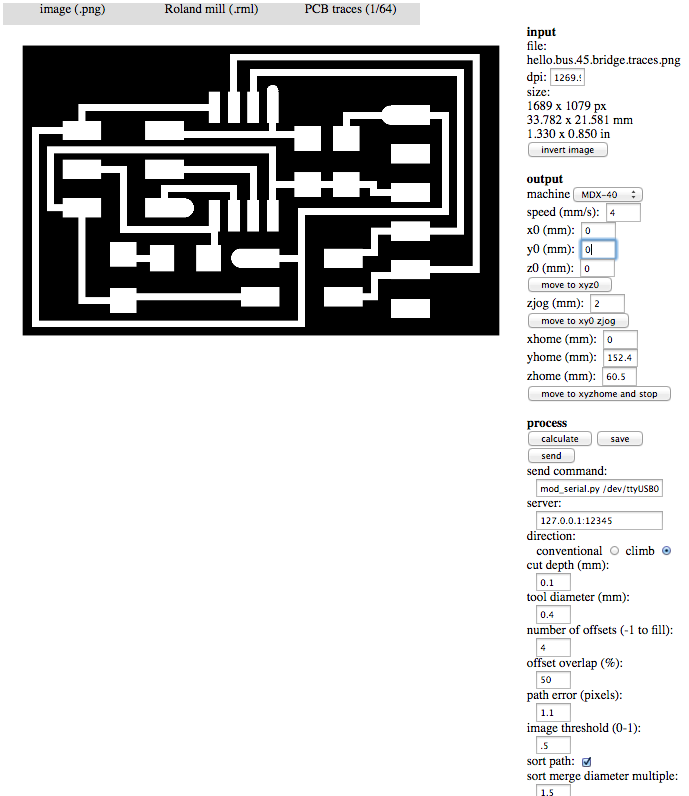
Here the settings for the border:
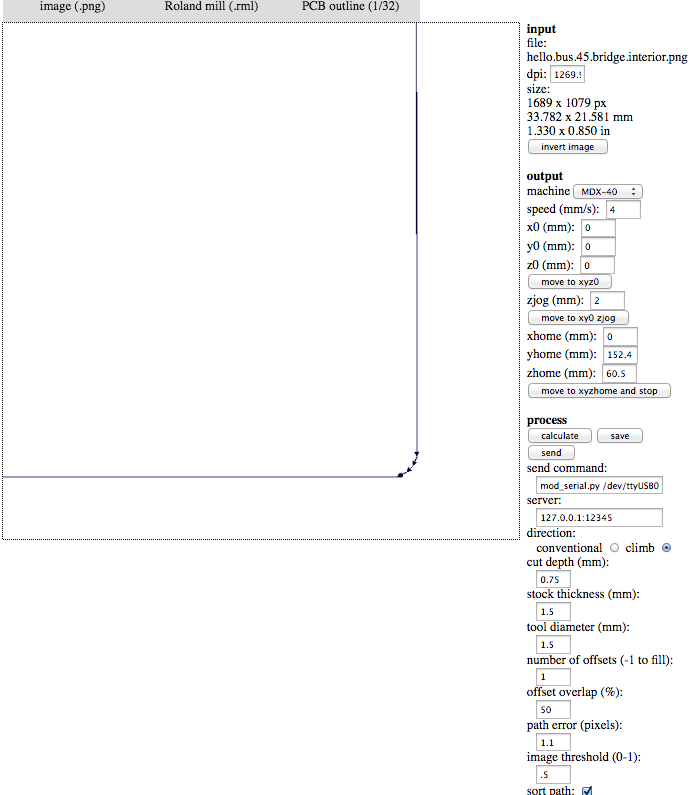
Traces of the node board:
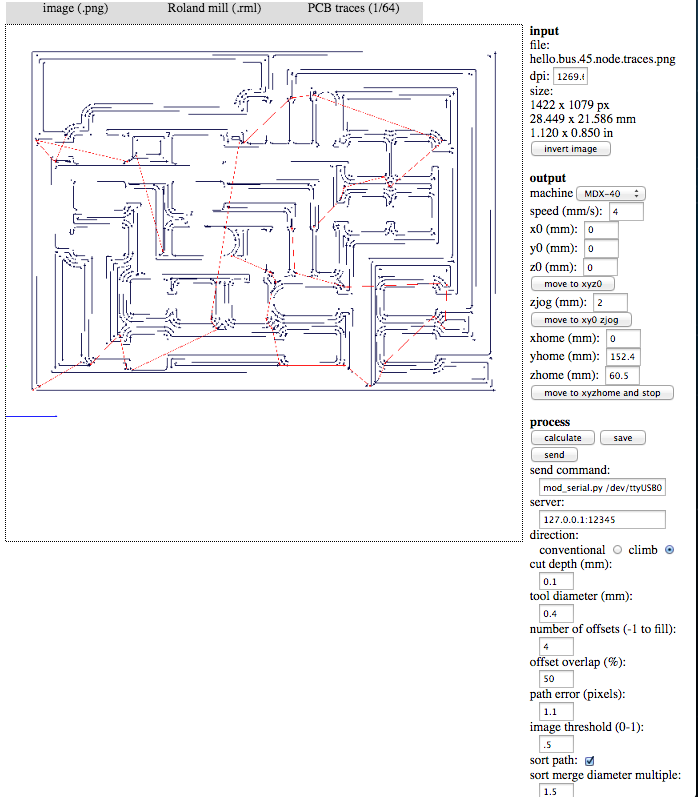
During the first milling of the board, I set wrongly the zero and this was the result:
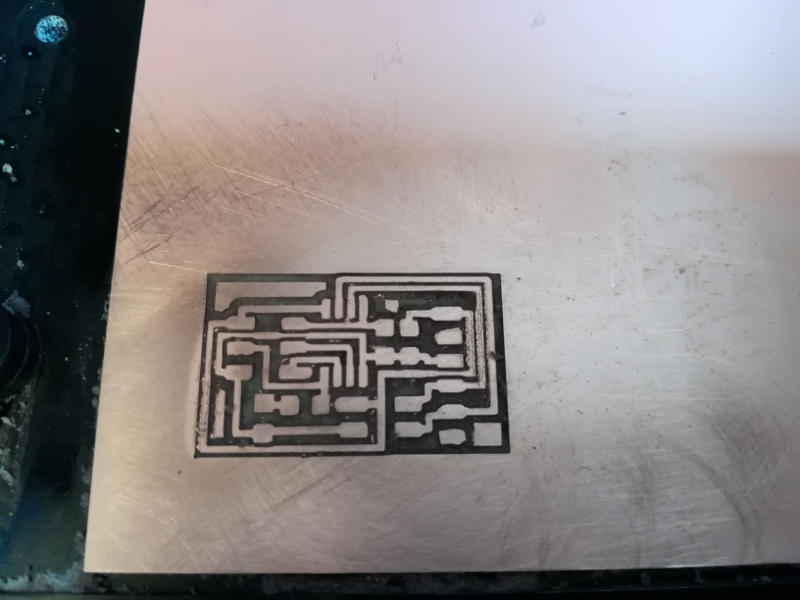
Here the boards are almost ready and I were just waiting for the ATtiny45 to arrive.
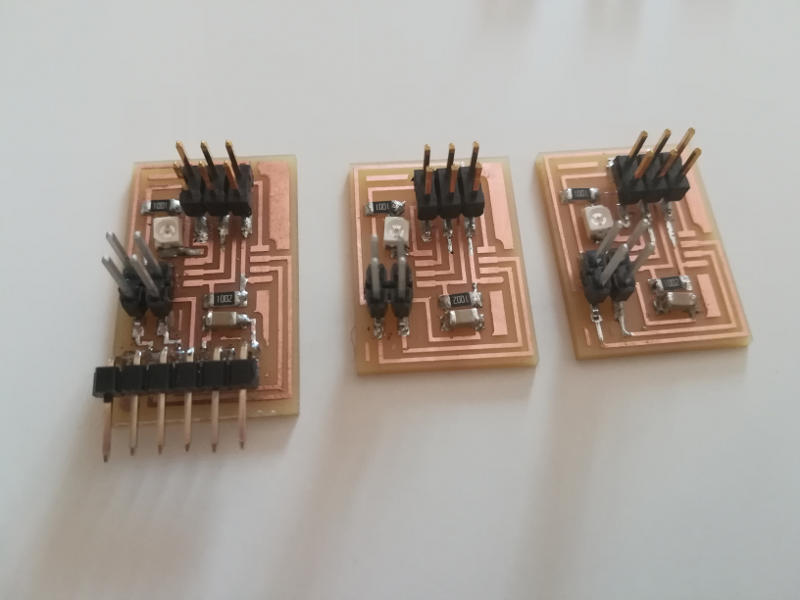
I made a ribbon cable with 4 lines to connect the boards.
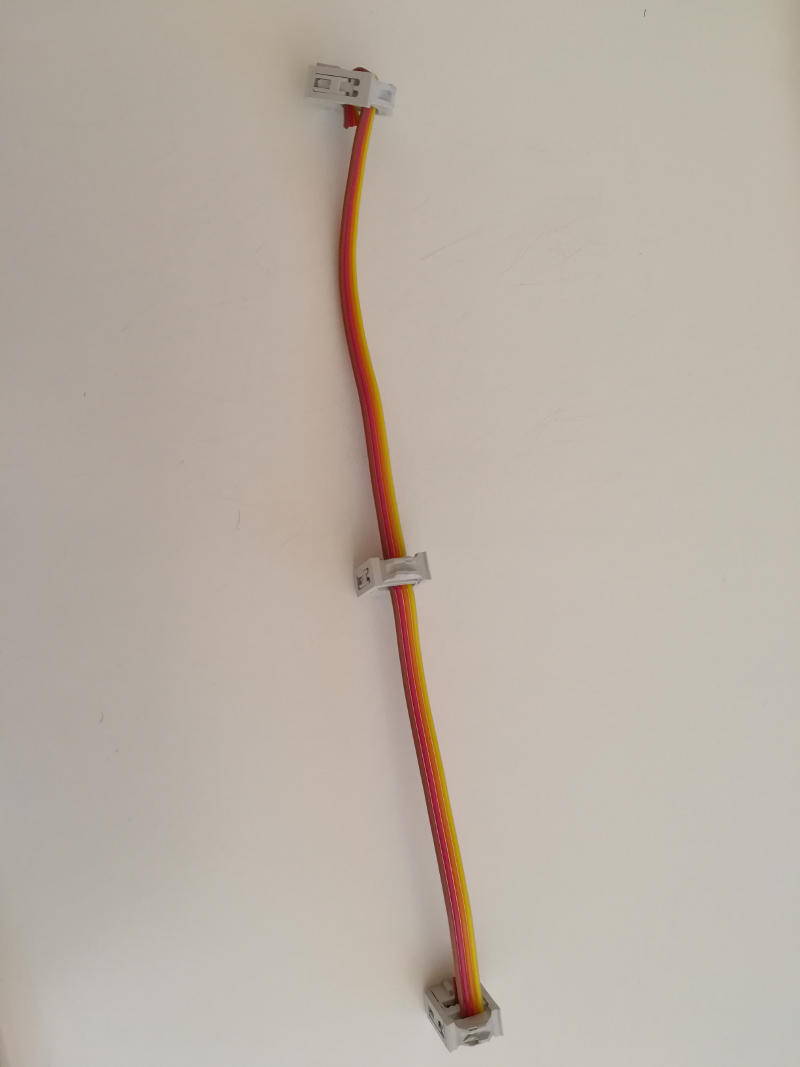
I read the Tutorial "Hello Serial Bus C" from the Fab Academy archive.
I modified the C programs in order to indentify the boards with different ids (0, 1, 2).
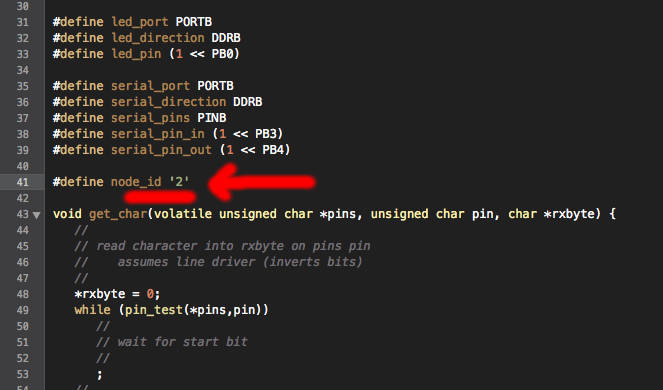
But when I powered the first board smoke came out. I disconnected everything and through my multimeter I find out that the V and the Ground were connected together. So I looked for the problem trying to clean around the traces with a cutter, but I got no improvment. So the "bridge-board" was out of service.
I decided to try to go ahead with the other two "node-boards" as far as I could. I figured out that they could be programmed without the "bridge-board" and maybe they even could comunicate between them and with my laptop (but at that point I was not sure).
I powered the board with the ribbon cable, I connected the Fab Isp board
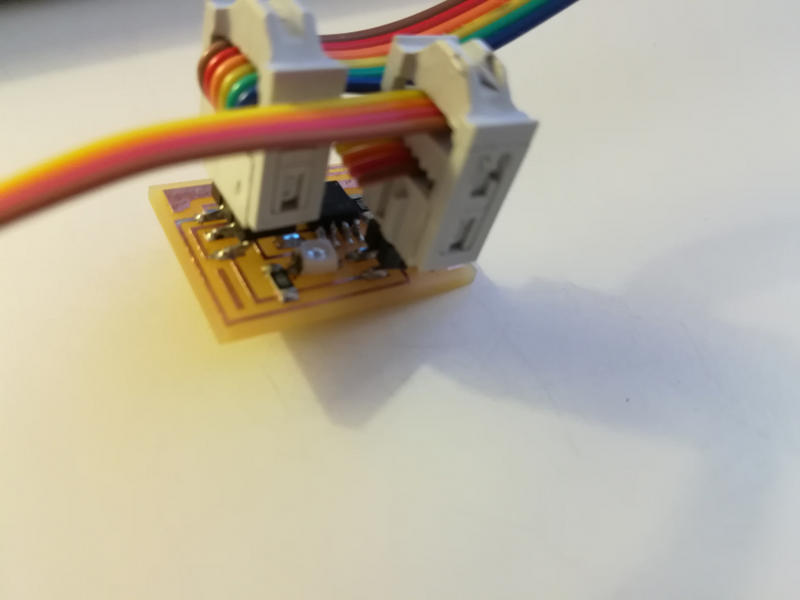
I checked the connections with:
avrdude -p t45 -c usbtiny
The answer:
new-host:2 pablocolturi$ avrdude -p t45 -c usbtiny avrdude: AVR device initialized and ready to accept instructions Reading | ################################################## | 100% 0.01s avrdude: Device signature = 0x1e9206 (probably t45) avrdude: safemode: Fuses OK (E:FF, H:DF, L:62) avrdude done. Thank you.
Then I successfully programmed the two node-boards with:
new-host:2 pablocolturi$ make -f hello.bus.45.make program-usbtiny
I connected the boards together:
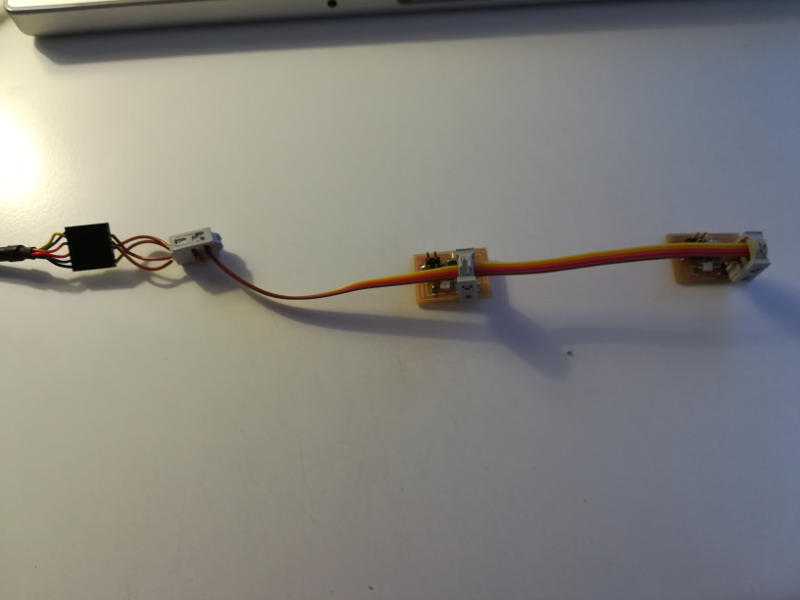
I opened CoolTerm and I configured the right port:
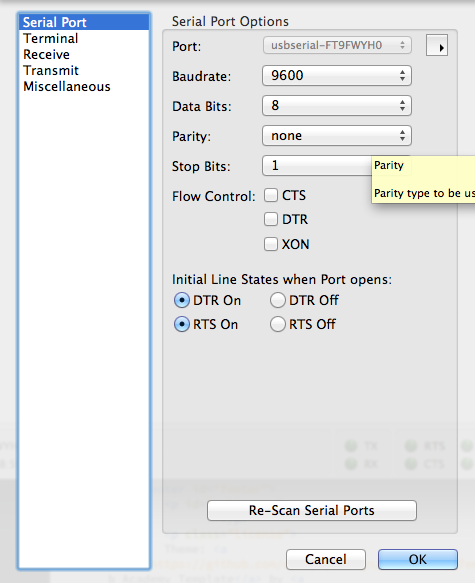
The boards answered when I sent the character "1" and "2" !!!
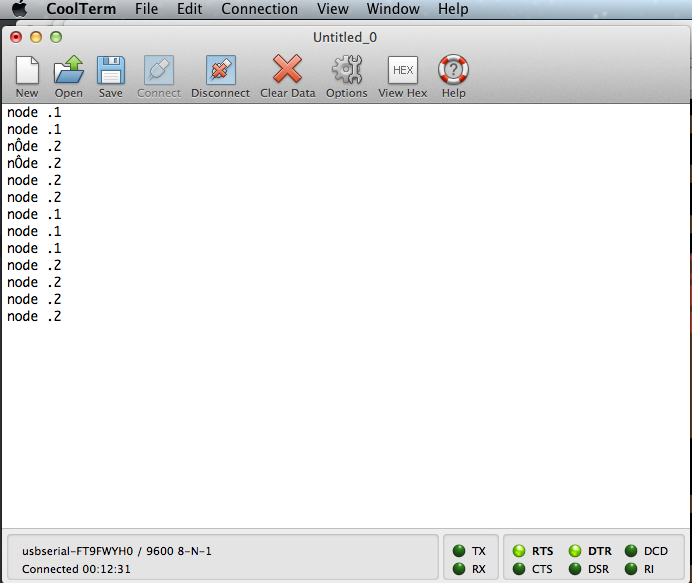
Python
I wanted to run also the file term.py from the archive.
It was my very first time running a Python's script and I didn't know where to begin. After some research I finally found a well documentated page.
To run the Python script I would enter, with the terminal in the folder where the script is located:
python name-of-the-file name-of-the-port baud-speed
python term.py /dev/tty.usbserial-FT9FWYH0 9600
The usb serial port name can be found typing:
ls -al /dev/tty.usb*
The script run and the boards answered when I typed "1" and "2" on my keyboard!!!

DC motor turned by serial comunication (Final Project - Electronics) (FAILED)
If you check Final Project - Electronics section, you can se my attempt to turn a DC motor by serial comunication from my laptop. The example was taken from the book Make: AVR Programing, Elliot Williams.